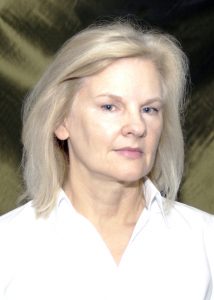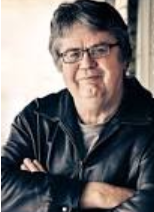NEW YORK (CelebrityAccess) Veteran writer/editor Susan Whitall has published the compilation “Joni on Joni”: Interviews and Encounters with Joni Mitchell” that includes a 1970 interview with the living legend by CelebrityAccess Senior Writer Larry LeBlanc.
The book also includes interviews with Mitchell by Cameron Crowe, Sylvie Simmons, Vic Garbarini, Alanna Nash and Dave DiMartino, as well as some rarely-seen ones, including Whole Earth Catalog founder Stewart Brand. Whitall has also included information about Mitchell’s Detroit years from her first husband, Chuck Mitchell, in the introduction and unique photos of the couple from the Detroit News when the couple was living in the city in 1966-67.
Whitall is a former writer and editor of legendary music magazine Creem and a feature writer at the Detroit News with previous books “Women of Motown and Fever: Little Willie John’s Fast

Life,” “Mysterious Death,” and “The Birth of Soul.”
LeBlanc’s article was published in Rolling Stone in 1971.
“I started writing in 1965 when I was hired by the Ajax Advertiser in Ajax, Ontario,” LeBlanc said. “I wrote a weekly column “Teenbeat” for 10 cents an inch that reported on dances at the local high schools. My first interview was with Ronnie Hawkins in the lobby of Le Coq D’Or club. He had a go-go girl on each knee, and was drinking brandy alexanders.
“While in high school I wrote for RPM Music Weekly, Canadian Teen, Teen Weekly, The Gogue, Toronto Telegram ( a regular column in After Four–the paper’s youth supplement). Meanwhile, Jim Delehant hired me as Canadian Editor for Hit Parader in New York to provide profiles and news coverage on Canadian music artists.
“In my last year of high school, I began writing for the national scholastic magazine, Canadian High News. I began as a freelancer at the monthly publication and became Editorial Assistant in 1969 handling writing, editing copy and layout
“Over the next few years I wrote for a slew of Canadian and international publications including Canadian High News, Record Week, Today’s Generation, Sound, Grapevine, Music Express, TV Guide, and Beetle in Canada; and Hit Parader, Rolling Stone, Side One, Crawdaddy, Zoo World, and Circus in the U.S. and Melody Maker, and Zigzag in the UK.
“I became the Canadian editor of Record World in 1970 and wrote a weekly column for the New York trade until 1980.
“The Rolling Stone interview came about from me attending the annual Mariposa Folk Festival in the summer of 1970 on Toronto Island (you take a ferry from the bottom of Toronto to the Island). That summer I had been working as a counselor at a kids camp so when I arrived at Mariposa I didn’t know that the media wasn’t supposed to be in contact with Joni whom I knew slightly over the years from being in Yorkville Village in Toronto. I brought my tape recorder hoping to get some interviews with different artists as I had done in the past 4 or 5 Mariposas i had attended. I may have been aware that Joni was appearing but I don’t think she was announced.
“In the afternoon I was sitting at a picnic table and Joni sat down with her dulcimer saying, ‘Hey Larry, I haven’t seen your for awhile.’ We briefly talked and she played her dulcimer and I took about 8-10 photos with my Pentax XL. I asked if she’d be willing to do an interview and she said sure but it’d have to be later in the day around 7 PM.
“So at 7 PM I went to the backstage area—which was offbounds to all journalists—and asked for Joni and told whoever was there I was to do an interview. Mariposa media people just freaked and said there’d be no interview. Did I know that there was a press embargo on Joni? Well, I didn’t and I persisted. Joni very very reluctantly came out and we sat in the grass about 30 feet from the  backstage area and we talked for over an hour.
backstage area and we talked for over an hour.
“There’s no question that this was a pivotal interview. She had just returned from overseas and the songs that would be on “Blue” were either being written in her mind or certainly were on her mind. The interview has so much about what would be “Blue” but also the interview displayed the changes being made in Joni’s life that she wasn’t quite prepared for or uneasy about. Like her growing fame.
“Mariposa attendees gave her a lot of privacy. She was there with James Taylor—who did not perform—and the next day I took them for a row boat trip around the Island’s lagoon along with publicist Richard Flohil’s young teen daughter Jill. It was idyllic. James remembers doing that when I talked to him more recently.
“There are several version of the Joni article from the tape that I did. A piece ran in Canadian High News—a national publication in Canadian schools I worked for–and another version ran in the Canadian publication Sound.
“My ultimate goal was to get an article in Rolling Stone which I had been courting for about a year and doing bits of pieces of work behind the scene for Jann Wenner. At one point, Jann wanted me to open up a Canadian version of Rolling Stone (like he did in the UK and Australia) and that fizzled out. I think my contact person at the time was Abe Peck and he pitched the Joni article that finally ran in 1971.
“Soon afterward, I visited Joni’s parents in Saskatoon and had supper with them. I was working on a book on Canadian folksingers that never got published. At one point her mother Myrtle offered to let me see Joni’s room which had been left the way it was when Joni had moved to Toronto. They talked about visits in Saskatoon of James Taylor and David Geffen. I did get to see Joni’s record collection stored in a 45 Poodle record box. Very ‘50s and ‘60s with Frankie Lyman and the Teenagers, and Joe and Eddie. I got to see her collection of 5-pin bowling trophies as well as photos of her modeling wedding gowns in Detroit when her and her hysand moved to Detroit….that’s where Tom Rush heard her and first recorded her songs.
“Myrtle later wrote me a long letter—about 15 pages—background on Joni. I told Joni later about that in recent years and she said, ‘Heck, it’s winter and the prairies. What else is she going to do?'”
Here is an excerpt:
A few feet away Gordon Lightfoot sat on a park bench and said how great it was to be a spectator for a change. David Rae, who at last is emerging from the relative obscurity of guitarist to Lightfoot,, Ian and Sylvia, and Joni, were there, cheerier than ever. Jack Elliott, with significantly smiling eyes, pulled his broad-brimmed cowboy hat over his forehead, put his thumbs in pockets and waited his turn at the bottle being shared by Mississippi Fred McDowell, J.B. Hutto and Lightfoot. …
“In January, I did my last concert. I played in London and I came home. In February I finished up my record. I gave my last concert with the idea I’d take this year off, because I need new material. I need new things to say in order to perform, so there’s something in it for me. You just can’t sing the same songs.
“I was being isolated, starting to feel like a bird in a gilded cage. I wasn’t getting a chance to meet people. A certain amount of success cuts you off in a lot of ways. You can’t move freely. I like to live, be on the streets, to be in a crowd and moving freely.”
The collection is released Nov. 6, the day before Mitchell’s 75th birthday.
“She was a solidly middle-class, buttoned-up bohemian; an anti-feminist who loved men but scorned free love; a female warrior taking on the male music establishment,” Whitall writes. “She was both the party girl with torn stockings and the sensitive poet. She often said she would be criticized for staying the same or changing, so why not take the less boring option?”





























